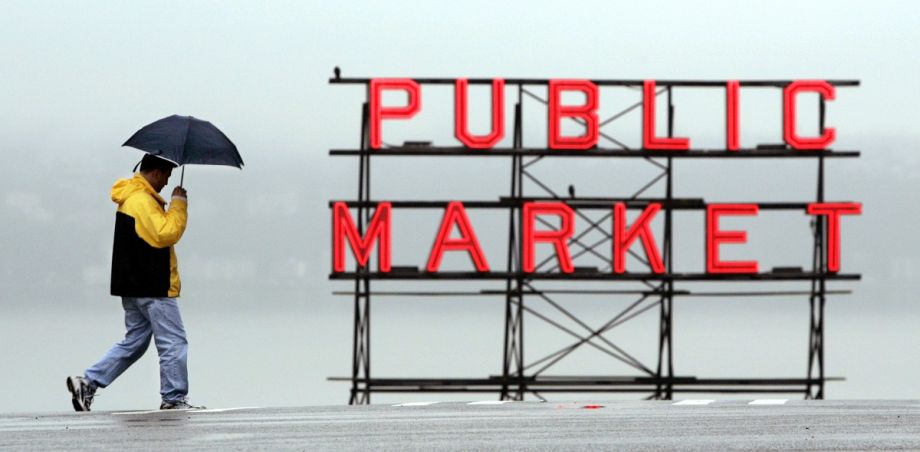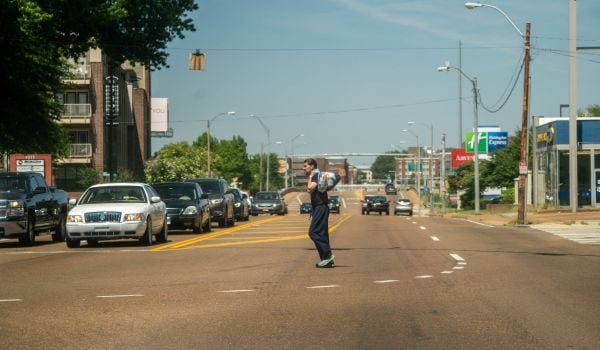Two weeks ago, the city of Seattle voted yes on “Move Seattle,” a property tax levy that will funnel $930 million over nine years into transportation improvements.
Among the projects on the drawing board: making the parts of the city outside the core more walkable by installing sidewalks. But not just regular sidewalks. The city plans to use alternatives to traditional concrete and curb to make the budget go further.
In Seattle, traditional sidewalks cost about $300,000 per block if not more. “Nationally, it’s closer to $250,000 a block,” says Gordon Padelford, neighborhood support coordinator for a Seattle walking and biking advocacy group called Seattle Neighborhood Greenways. (Padelford is also a member of the city’s pedestrian advisory board.)
“Some of [the higher cost] may have to do with Seattle’s iconic hills … our stringent stormwater requirements, Seattle Public Utilities not paying for drainage improvements [and that cost being borne by the new sidewalk], labor regulations, or overengineering, but pedestrian advocates simply don’t know what is the true cause of our high cost of traditional sidewalks at this point in time,” he says via email.
Whatever the reason, the city and sidewalk advocates think they can get 250 blocks of sidewalk for the cost of 150 by looking at alternative configurations. Stamped asphalt is less expensive, says Liz Sheldon, of the Seattle Department of Transportation, “because it lowers the price of materials [and] it also goes down a lot faster.” Another option is simply putting curb stops in the street to partition off a small walkers-only lane. There’s also the possibility of using planter boxes to delineate parking spaces as well as create a pedestrian space. Car-width planters are placed a short distance away from the curb in hopes that drivers will parallel park aligned with them, leaving space between automobile and curb for pedestrians.
These have all been piloted in various parts of Seattle, Sheldon says. “We looked at a bunch of different pilots … said, ‘Why don’t we come up with five or six different things that will work and standardize them as much as possible?’”
These creative solutions and more will be needed to increase the walkability of the city, already ranked the eighth-most walkable city in the country. However, there are some areas — mostly in the far north and south parts of the city — that are lacking.
As the city of Seattle grew in the postwar period, it absorbed smaller cities and unincorporated parts of King County. Those mostly residential neighborhoods were often built to less forward-thinking standards and codes, so many, even today, lack sidewalks.
Six thousand blocks in Seattle, or about 25 percent of its blocks, have no sidewalks, says Sheldon. “We’re now looking at those areas, as they densify, they have over time become more and more city-like. How do we provide the same infrastructure in an area that’s already built?”
The city is also looking at programs that will incentivize private developers to build more or better sidewalks and, Sheldon says, it’s partnering with Seattle’s public utility agency to tackle sidewalks and drainage/stormwater management at the same time. “When you combine those projects, the cost is almost the same as a traditional sidewalk, but you get a really cool drainage system and a really cool pedestrian environment.” “Cool drainage systems,” for the skeptical, are bioswales and other attractive stormwater retention systems that are as pretty to walk near as they are functional.
Adding 250 blocks of sidewalks is not going to make a significant dent in the number of blocks missing sidewalks, but advocates believe that placing them strategically (near schools, transit and businesses) can make a big difference, especially because less walkable neighborhoods track fairly closely with lower-income households, lack of car ownership and a lack of physical activity.
“It’s a lot of sidewalk building,” Padelford says, “but there is just enormous need.”
The cost of getting started has likely contributed to the city’s backlog. “One of the things the Mayor has said,” Sheldon says, “is because it seems really overwhelming, we haven’t done very much, but we need to start. This is a way to start.”
The Works is made possible with the support of the Surdna Foundation.

Rachel Kaufman is Next City's senior editor, responsible for our daily journalism. She was a longtime Next City freelance writer and editor before coming on staff full-time. She has covered transportation, sustainability, science and tech. Her writing has appeared in Inc., National Geographic News, Scientific American and other outlets.
Follow Rachel .(JavaScript must be enabled to view this email address)

















